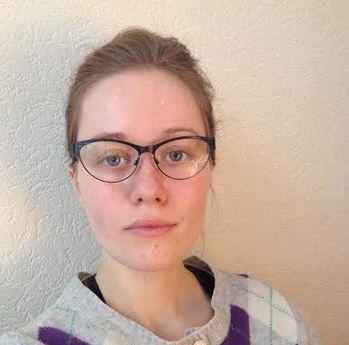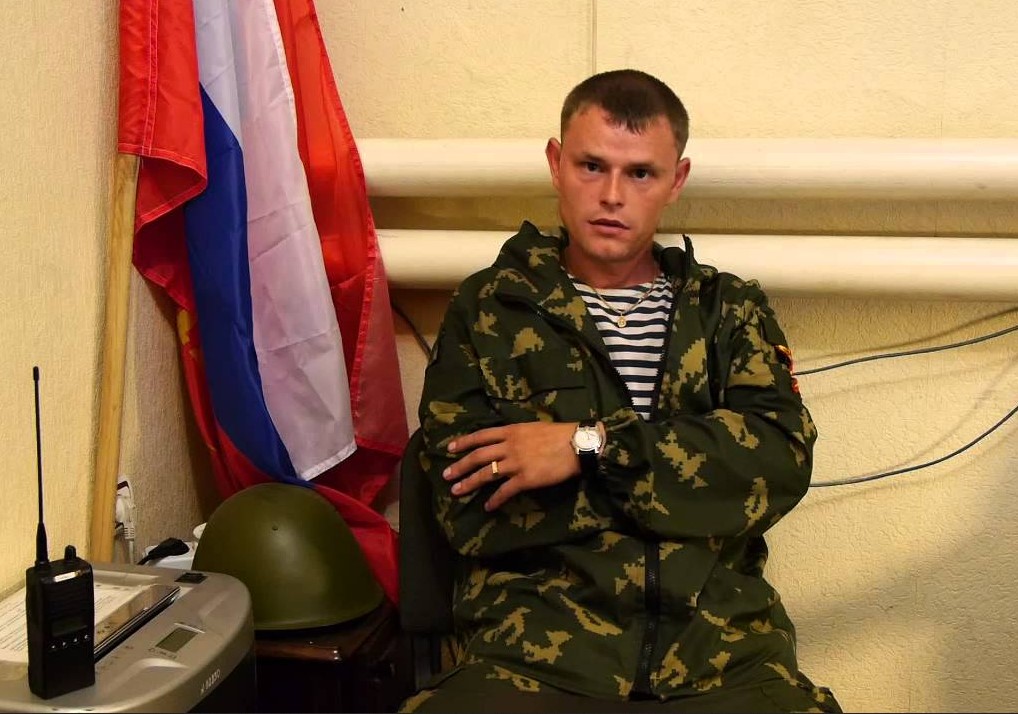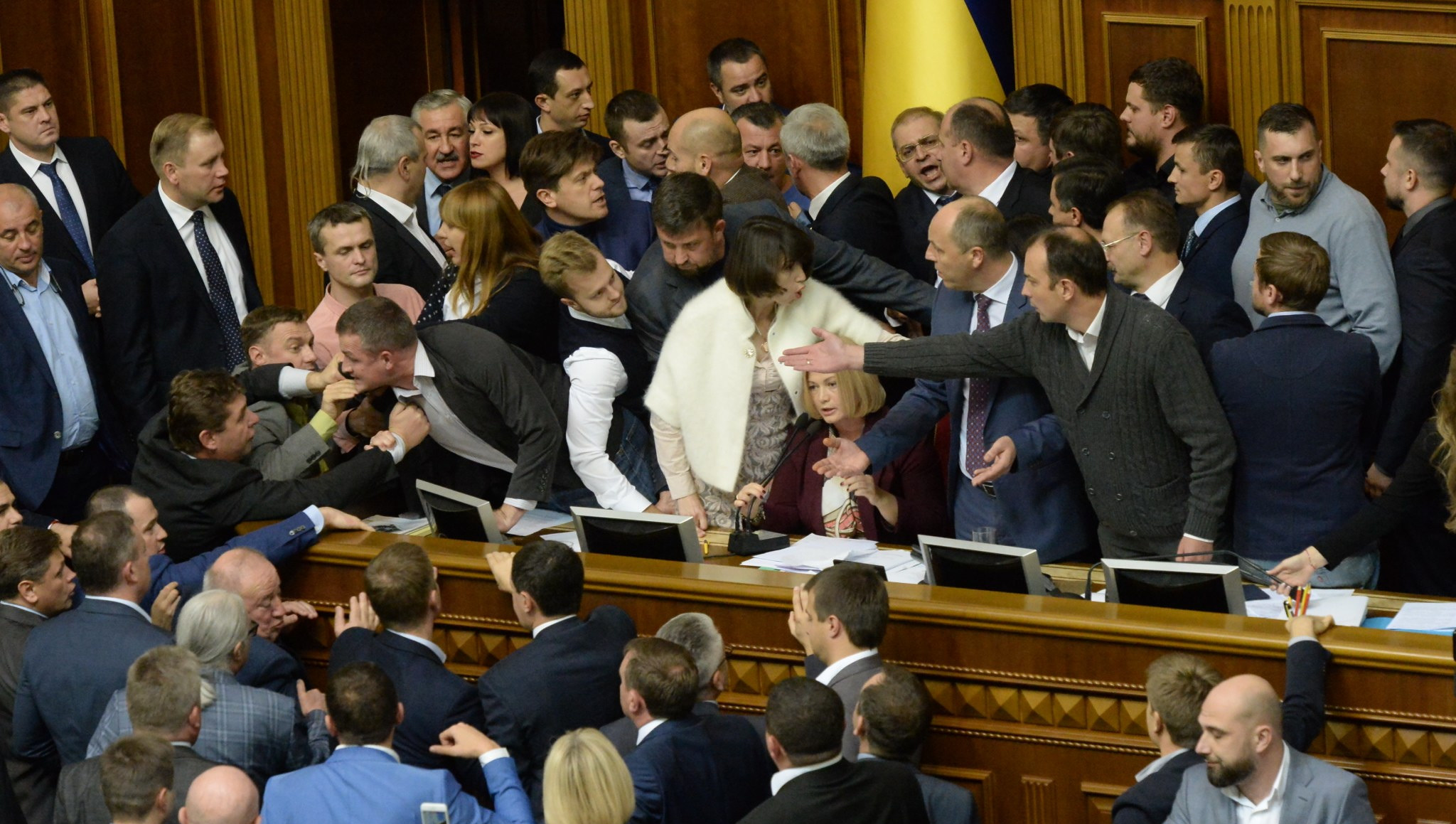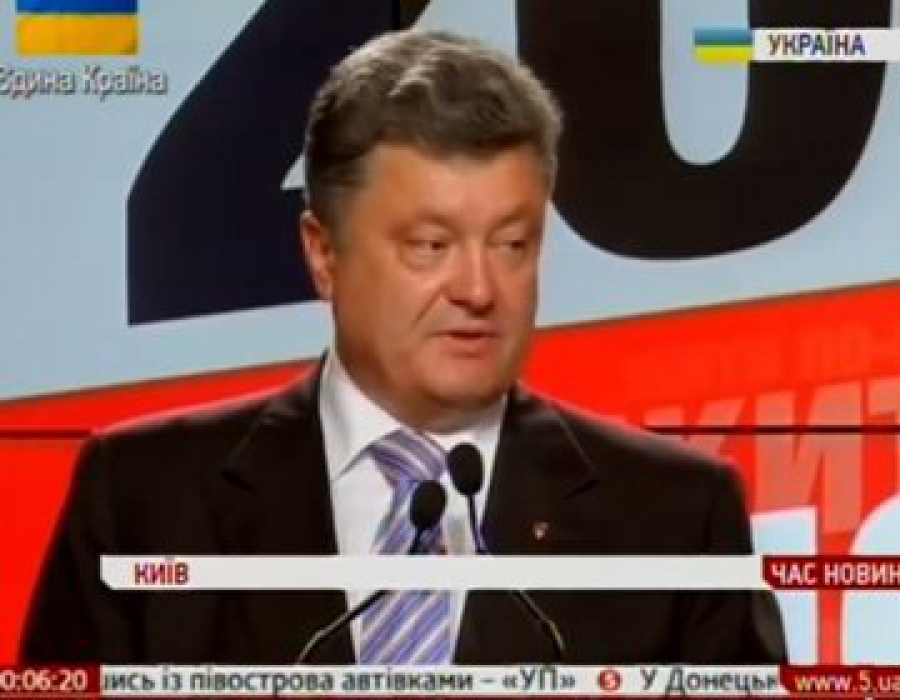Festival about Art and politics in times of war offers a new understanding of society in post-Euromaidan Ukraine
From 3-26 October 2014, the festival “Women Commentators” was held at the Xawery Dunikowski Museum of Sculpture Królikarnia in Warsaw, at which contemporary art of both Ukrainian and Russian female artists focusing on socio-political criticism was presented. The festival was initiated by renowned Polish artist Katarzyna Kozyra and curated this year by Katya Krupennikova, a Russian curator who also works in Warsaw (the Centre for Contemporary Art Ujazdowski Castle). In addition to the specially organised discussion platform and documentary cinema program, the festival featured a museum exhibition showcasing artworks commenting on the current situation of war between Russia and Ukraine, made by artists including Lesia Khomenko, Alevtina Kakhidze, Ekaterina Lazareva, Olga Jitlina, and many others [1].
“Art and politics in times of war” was the initial conception of the festival. The idea to give artists coming from two deeply antagonized countries an opportunity to hold a dialogue within a few-day-long conference was, quite obviously, conceived just after the Russian annexation of the Crimean Peninsula. It may be admitted that the festival’s moving spirit was not the exhibition alone, but the creation of this particular “one discursive platform” that would in a way throw together artists coming from both countries and provoke them to rethink the post-Maidan civil war as well as to critique the mainstream and populistic ideologies, currently existing in Russia and Ukraine.
So, what was the result of all that?
The language of art and the war of ideologies
I would repeat after Lyotard that contemporary art which tries to speak about war, revolution or similar events brings us closer to something completely “unpresentable” [2]. In its turn, the category of “unpresentable” connects us, in a certain and non-representative way, with pain, suffering and lost meanings that surely characterise all catastrophic events. One may try to understand the “unpresentable”, but one cannot simply see it, as the actual reality of war, or even revolution, cannot be rendered or reproduced, given all the emotions and experiences of its witnesses. However, largely resulting from the hostile Russian propaganda, the crisis of representation of reality is so deep in Ukraine, that aesthetic categories such as “unpresentable” are far out of the question for the local art-scene. In a way, this discursive as well as visual “struggle for reality” defined the entire “Commentators” festival, which, precisely validates its original idea pursued by Katarzyna Kozyra.
It should be admitted that during and after Maidan Ukrainian art had to serve informational purposes by either documenting the surrounding reality step by step (e.g., the graphic portraits of the Maidan protesters made by Lesia Khomenko) or by provocative attempts to bring the reality to the surface (e.g., Ukrainian national flags for the people of the "Donbas People's Republic" made by Alevtina Kakhidze). This is probably why one of the most demonstrative artworks shown at the festival was “How to pack and deliver food to a detention facility”, a live performance in the form of workshop presented by Maria Gonchar, a media artist from Ukraine. Here, she showed the Polish audience how to prepare, wrap and deliver food for people living in Ukrainian penal institutions in a quick and proper way. However, apart from the aesthetic principles of documentation of the Ukrainian revolution, the reality of war, or the struggle to represent this reality, in defiance of Russian media manipulations, are there some more profound conclusions that can be drawn from this one festival in Warsaw?
Perhaps the most important conclusion is that certain notions (“Russian propaganda”, “revolution”, “fascism”, “the third Cold War” and so on), utilized so often and eagerly at every exhibition on Maidan, have become practically useless. It is not simply because they have been overused to the extent that they have lost their meanings, but because they have become insufficient for describing an already-changed visual image or discursive field they were meant to refer to. It also suggests that Ukrainian artists in a way “get stuck”. In fact, the other name of this state of “being stuck” is Ukrainian national patriotism, which is surely not as ideologically univocal as it might seem at first side, when we take into account the entire country with its differences.
Before deconstructing our defensive and consequently so understandable kind of patriotism which also revealed itself during the festival, it is necessary to emphasize the changing nature of the political situation in Ukraine that transforms more often than one can gather it from the media. Having seized some scraps of the Ukrainian reality yesterday, today you are obliged, as an artist, to doubt and to ask yourself whether you are in accord with what is going on around you or whether you are hiding from the uncomfortable and dreadful reality behind the veil of the (defensive) patriotism. The well-known philosophical concept of antagonism, offered by Ernesto Laclau and Chantal Mouffe, can serve us the theoretical background (without dwelling on the reality of the Ukrainian politics, a subject upon which I will elaborate later) to describe the working mechanism of this reflexive kind of doubt for artists, or others for that matter, under these current circumstances [3].
According to Laclau and Mouffe, antagonism is the boundary of any objectivity. The philosophers understand this concept not as a mere struggle or just opposition but as ongoing rejections of the other discourse (or the discourse of the Other) and, consequently, constant and reflexive definition of yourself in a negative way. Antagonism is the process of invariable negation of its actors, preventing in such a way the final formation of the society in one strict ideological direction (nationalistic, liberal, oligarchic, etc). By recognizing the antagonism, or rather the sort of antagonisms, which tore Ukraine apart during the revolution and continue to do so after it, one would obtain a more complex as well as inwardly conflicting view on Ukrainian revolution to work with.
The aim of this article is to pose some problematic questions rather than to give strict answers and recipes. Thus, I would like to put forward the following question: What could all that has been discussed above mean for Ukrainian art as well as to Ukrainian post-revolutionary society?
Our post-colonial ressentiment
Just before the opening of the festival in Warsaw, on September 29th, Lech Wałęsa gave the Peace Award to Oleh Tyahnybok, the leader of the Ukrainian radical right-wing party “Svoboda” in the other Polish city of Gdańsk. While giving this prize, Wałęsa said: “Today we give this award to the people who personify Maidan and the struggle of the Ukrainian society”. Tyahnybok briefly replied that this award is also presented to “the whole Ukrainian nation, which defeated the totalitarian regime” [4].
The most interesting fact for us here is neither that it was the Ukrainian far right nationalist who got a peace prize as the representative of “the entire nation”, nor that it happened under the auspices of a political circle of Polish nationalists, even including former leader of “Solidarity” labour union. More important for us here is the fact that in the international arena the well-known Ukrainian nationalist party was recognised and personified as “the face” of Maidan or even “the face’’ of the whole country, even though the Eastern and Southern parts of Ukraine (namely Donbas and Crimea) have never identified themselves with O. Tyahnybok’s face and nationalistic ideology whether in terms of their national identity, spoken language or general culture code.
This particular sort of generalization and distortion of notions (“the Ukrainian nation“, “for the whole of Ukraine”, etc), in the face of the fact that Maidan was composed not only of “Svoboda” supporters but also their opponents, proves that neither we, nor Lech Wałęsa in Poland, trying to impose the personifications of nationalist identity politics on such historically different parts of the country, truly know Ukraine. It is worth saying that throughout the period that the author shot the video “One Day Living on Maidan” (2014), which was screened at the festival, not a single activist or resident of Donbas, Crimea, or Kyiv interviewed said they would like to see a far right nationalist as an epitome of the Ukrainian revolution. Assuming, obviously, that the revolution represents the common interest of the whole country (that is, “Ukraine”).
Furthermore, the discourse of the contemporary art industry surrounding Maidan and the ongoing Ukrainian-Russian war has gradually evolved into a kind of well-exported ressentiment, to revive this one Nietzschean term. It seems that the ability to acknowledge our own fallacy along with the mistakes made by the Ukrainian opposition forces got lost in never-ending clichéd dispute about the despicable figure of Yanukovych and about the condemnation of Putin’s imperialistic and militaristic policies. As a result, every attempt to transcend the ideological binary opposition, whereby you are either a defender of imperialistic Russian propaganda, or a supporter of nationalist Ukrainian propaganda, causes outrage and meets with ridiculous accusations of, for example, collaboration with the Kremlin. This, in its turn, leads us to the aforementioned situation in which politically engaged artists “get stuck” with their work in one propaganda or another, and where we remain simply oblivious to the so systematic and rhyzomatic nature of the Ukrainian problem that equally encompasses historical Russian colonial aggression, and the consequential rise of the Western Ukrainian nationalist idea which remains unacceptable in the East of the country, and leftover oligarchic elites that were switched up due to the Maidan, but not overcome as an entire corrupted system.
As a matter of this ideological binary “either-or”, the festival discussion platform showed that dialogue between the Ukrainian participants was even more antagonistic than communication between the Russian and Ukrainian participants, despite the obvious fact all of us are ideologically against the Kremlin policies. Inconveniently for us, this conclusion proves that Ukraine is divided into various antagonisms that we have no right to constrict or censor, regardless of our patriotic wish to paint picture of the Maidan revolution for the West only with cheerful and heroic colors. There is even a local dilemma with the additional definition of the Ukrainian war as a civil one. On the one hand, there are patriots who see the war as a fight only against a foreign aggressor (namely Russia). On the other hand, the armed inhabitants of the East (so-called separatists), distinct from the real soldiers with Russian passports in camouflage, stopped being considered as Ukrainian citizens from the very beginning of their “separation” within the Maidan.
But why?
For sure, the roots of this particular problem is not in the artists themselves (on the contrary, I support them greatly because of the very same patriotic reasons I am stuck in) but rather in the artistic system that serves the mainstream liberal politics, following this “either-or” binary logic. That is why what is taking place, or rather not taking place, in the Ukrainian art today is the problem of the whole socio-political space. In that regard, the festival raised one more political question: Can Ukrainian artists follow an alternative ideological path that would be different from the patriotic discourse on the Ukrainian situation as well as from the resultant resentment towards Russian propaganda, which grows even stronger each time Ukraine try to fight it? And, if they really can, what continues to make this socially-oriented Nietzschean transition to the “other side” of both the Russian and Ukrainian propagandas so impossible?
Imperialistic Putin as the Ukrainian “anti-fascist”
First we will need to figure out another transition, which unfortunately, follows the same binary logic, though this time verging on tragedy and farce.
Vladimir Ishchenko, an editor of Commons: Journal of Social Criticism and lecturer at the Department of Sociology at the National University of Kyiv-Mohyla Academy, claims that “the issue of the participation of the far-right party in Maidan is complicated, and has to be approached with particular caution. Unfortunately, the two most common standpoints about Maidan are equally inadequate: ‘There were no fascists’ versus ‘Maidan was a fascist putsch’. They are both wrong” [5]. The orientalistic image of Ukraine within the Maidan – either this is anti-fascist Donbas group fighting with the Kiev “junta” or just democratic opposition terrorized by an Asian tyrant Yanukovych – is also highly inadequate and stems from the impossibility to grasp the reality of this one revolution [6].
In the light of these considerations, even if radical conservatives did not form a dominant group on Maidan, it makes no sense to pretend they were not there. “We cannot deny these forces are xenophobic and anti-democratic. Their members, besides everything else, took part in racist assaults and violent attacks against left-wing supporters and labor union activists’’.[7] Moreover, any politically involved Ukrainian artist coming from the progressive standpoint can not ignore them or pretend they do not exist [8]. Moreover, Ishchenko emphasizes that the notions of “fascism” as well as of “anti-fascism” have been so discredited by both Ukrainian and Russian antagonist forces that it is impossible to use them anymore. At the same time, he claims that an urgent need to use these categories when analyzing Ukrainian Maidan remains . Following Ishchenko’s logic further, far right parties and organisations (mainly “Svoboda”) have gained a great deal of respect and popularity as revolutionary heroes, as is particularly evident in neighboring Poland. Indeed, claims that regional political endorsement for nationalist organisations in Ukraine is incredibly low are not supported by sociological data based on the independent research on the Ukrainian protests [9].
Interestingly, the question about the mentioned fascist/antifascist binary was also raised during the festival. It is beneficial to refer to it again with reference to new facts: So why, given the situation, was “Svoboda” unable to convert its visibility during Maidan into the official outcome of this October’s parliament elections? Does this mean we did not have within the Maidan and do not have generally in Ukraine any radical right-wing movements?
Of course, the Ukrainian society was not sensitive to the ultra-right- forces partly due to the fact the pseudo-critical rhetoric about them was completely overtaken by imperialistic Russian propaganda, pursuing its own goals here. Besides, a lot of the nationally-patriotic minded citizens of Ukraine mistakenly think the fall of sympathy for ultra-right is a consequence of recent parliamentary election’s results. For sure, the main ultra-right party “Svoboda” was not elected this time in the parliament, however they did not get just 0.3 per cent to the required entry barrier (5%) [10]. Thus, to stay on path we have to pay attention to the complex election results obtained by nationalists after Maidan. For example, Ukrainian nationalist parties and organizations in this elections successfully passed in the majority districts (election of individual representatives of the party). Moreover, if we combine the results of all parties with radical nationalist agenda balloted for the parliament this time (“Svoboda”, “Right Sector”, the Radical Party, KUN, etc.), their total amount, even under rough estimate, is more than 14%.
To compare, we may provide the other figures: in the previous president elections the total result of the balloting ultra-right candidates was 10.18%, while the total result of these parties at 2012 parliamentary elections, the Russkiy bloc included, was 10.93%. Keeping in mind that this year the separated Crimea and Donbas did not take part in the Ukrainian elections, though the ultra-rights from the western regions have never been popular there, the election outcome of “Svoboda” and others remains more or less stable. In its turn, this fact works against those who believes even if Maidan included some nationalists within the revolution, it was only because of the temporary confrontation with the external enemy like Donbas separatists or Russian soldiers. At the same time, it would be wrong to say Maidan brought a rise of far-right movements that have never been seen before. If you take a retrospective look at the above mentioned nationalist’s results from the previous election years, it is obvious these movements have existed long before the Maidan 2014. Keeping in mind that generally Maidan was not entirely right-wing oriented, it was precisely Maidan, whether forced by Putin invasion or not, that legitimized this patriotic tolerance towards our own ultra-right activists.
Besides, this answer to the question why this time Ukrainian nationalists did not pass to the parliament only re-confirms the rhizomatic nature of the complex Ukrainian problem mentioned at the beginning of the article. Those results appear to be due to the fact that parties of P. Poroshenko and other famous opposition representatives of the revolution, competing with “Svoboda” largely consist of the powerful Ukrainian oligarchy, urgently united in a coalition because of the current economic crisis. Ukrainian people just had to believe the local business elite will save the country from the post-revolutionary economical collapse by means of their capital and manager’s experience. For sure, the last point is one more of our illusions, slightly reminding us of the Orange revolution’s result of 2004. But, in fact, who cares if after Maidan there are still no other political alternatives to choose, except of the neoliberal businessmen and some local nationalists.
Another aspect of this subject can be illustrated by an interview with the famous Ukrainian writer Yurii Andrukhovych, where he exposes discriminatory and social racist views on Donbas and other historically Russian-speaking territories of Ukraine, entrenched in the nationalistic part of society (mainly Western Ukraine and Kiev) long before Maidan 2014 [11]. Berlin-based historian Andriy Portnov also elaborates in several of his articles on the propaganda of national division spread by popular Ukrainian liberal intellectuals, who therefore cling to internal Ukrainian orientalism [12]. This list could be continued.
So, even from the psychoanalytical standpoint, which tends to mark the most traumatic experience with a peculiar kind of playfulness, Ukraine continues to work for the desire of its Big Other (Russia), thinking more about him than about its own oligarchs who take over the feudal economical power after Yanukovych right in front of the Maidan protesters’ eyes (particularly touches in Kiev, and Kharkiv, and Odesa oblasts). This became even more perverse during the democratic upsurge of the Ukrainian revolution, demonstrated the symbolical symbiosis of Russia's historically imperialistic regime and the far-right Ukrainian forces facing their post-colonial trauma (the Russian Empire and the USSR “internal colonialism”, according to the Timothy Snyder’s notion) once again. So, probably, the more the actions of the Ukrainian nationalists are legitimized by the society, the easier it will become for Russian propaganda to manipulate their electorate by convincing they are the “lesser evil” [13].
Socially oriented exit ’’on the other side’’ of both propagandas
The post-colonial situation of Ukraine (Western Ukraine per se) and its own predicament was a separate subject at the festival and proved to be extremely interesting, unlike in Russia, not only for the Polish right-wing representatives, but also for the left-wing and liberal curators, journalists and historians. However, “the nation-state is a utopia. There is no way back to it,” says Timothy Snyder, a historian at Yale University and specialist on the post-colonial history of Ukraine [14]. This one controversial thesis was useful to analyse at the festival, as Ukraine, even after 20 years of national independence, has failed to so far establish a nation-state within the boundaries that remained intact until the spring of 2014. To a great extent, Maidan was therefore an attempt to establish this collective body of the nation and at the same time an expression of everything that the western part of the country perceives as linked to the colonial regime of the Russian Empire and the “internal colonization” of the USSR. But what are the results of this post-colonial trauma (which can only be avoided today by changing the course towards social revolution that truly unifies the country), for the other, Eastern part of the country ?[15]
Ukrainian de-sovietization manifests itself in the pursuit of the liquidation of the (post-)Soviet culture code. The sculptural monuments of Lenin, Artem and other Soviet figures were demolished this autumn in the Kharkiv, Dnipropetrovsk and some other Eastern regions [16]. Interestingly, as curator of the documentary program of the festival I presented a video of the Ukrainian filmmaker Katherina Gornostay about the demolition of the Lenin monument at Kiev Khreshchatyk street by far-right activists, this winter during the revolution. The poignant scene showing an old man bemoaning the loss of his past evoked by the monument clearly testifies against the cultural policy that tries to reverse by force the post-colonial trauma experienced by the certain regions of the country, but not the whole Ukraine. Nonetheless, right after the end of the festival, a couple of other unpleasant events took place in Ukraine. In addition to the outrageous public beating of Vasyl Cherepanyn, a Ukrainian leftist intellectual and director of the Visual Culture Research Centre, the anti-fascist exhibition “Ukrainian Zigafolk” was banned and shut down in the center of Kiev. Afterwards, during an interview for left-wing critic and journalist Andriy Movchan the exhibition’ curators told that “the concept of “Zigafolk” concerns things obvious to our society such as patriotism, ultra-nationalisms, “chernozem”, the call of the wild, etc, etc”. [17]
In the context of the current geopolitical relationships between Ukraine and Russia, the historian and artist Ilya Budraytskis accurately points out: “The big style of the Cold War precedes any military attack and consolidates the logic of the conflict as the permanent social state” [18]. So, finally, all of us are supposed to transcend these boundaries in order not to recreate it today, aren’t we?
At last, Pierre Bourdieu warns the reader in his monograph “The Political Ontology of Martin Heidegger” it is not his intention to denounce or disclosure anyone in his book. Likewise, I too wish this article to be perceived as simply an attempt to entertain reflexive doubt as the fundamental instrument of our thought, as suggested by I. Budraytskis, but not as a denunciation of anything or anyone. Besides, this one reflexive doubt should not be transformed into a kind of patriotism even during the wartime. Moreover, an independent cultural hegemony of organic intellectuals may be considered as post-Maidan task of the Ukrainian contemporary art and politics. And may be, to hear the voice of this one Gramscian challenge and to act upon it is exactly the way of “stepping onto the other side” of the propaganda of both antagonist countries. And, may be this particular transgression, that must be critically verified by doubt as well, has a real potential to lead Ukraine to the social revolution, which is for sure the revolution per se…
May be, but let’s think together about all this.

[hr][1] To learn about the program and the artists visit the Museum and Foundation websites: http://www.krolikarnia.mnw.art.pl/en/wydarzenia-en/whats-on/15,event.html, http://katarzynakozyra.pl/foundation/our-projects/3/Komentatorki–Women-Commentators-FESTIVAL/
[2] Cf.: Lyotard J.-F. Le Différend. Р., 1983.
[3] Cf.: Laclau E., Mouffe Ch. Hegemony and socialist strategy: towards a radical democratic politics. London, 1992. Also: Hearts, Minds and Radical Democracy. Interview with Ernesto Laclau and Chantal Mouffe//http://www.redpepper.org.uk/hearts-minds-and-radical-democracy/
[4] The quotation after: ”Svoboda” Magazine No. 273, 2-8 October 2014, Russian translation – L. Babenko
[5] Ishchenko V. //http://commons.com.ua/po-povodu-klevety-antona-shehovtsova-o-ch/
[6] Artyukh V. The Western Left Should Not Repeat the Mistake Ukrainian Protesters Did on Maidan//http://www.criticatac.ro/lefteast/the-western-left-should-not-repeat-the-mistake-protesters-did-on-maidan/
[7] Cf.: Ishchenko V.
[8] Cf.: See the proposed constitution of the “Swoboda” party and other documentation: http://www.svoboda.org.ua/pro_partiyu/prohrama/konstytutsiya/
[9] Ishchenko V. Maidan, the Right-Wing and Violence in Protest Events Analysis// http://www.criticatac.ro/lefteast/maidan-the-right-wing-and-violence-in-protest-events-analysis/
[10] See the sociological review of the elections: http://vibori.in.ua/vibori-2010/rezultaty-vyborov.html
[11] Yuriy Andrukhovych’s interview “Our aim – free European country – is unachievable with Donbas”//http://m.colta.ru/articles/literature/4809
[12] Portnov A. Ukraine’s ‘far east’: on the effects and genealogy of Ukrainian Galician reductionism//1-andrii-portnov-ukraina-ta-ii-dalekyi-skhid-pro-halytskyi-reduktsionizm-ta-ioho-henealohiiu
[13] Vedrov A. http://commons.com.ua/shhe-pro-simbioz-regionaliv-i-svobod/
[14] Snayder, T. // http://gefter.ru/archive/12373
[15] Arunjan A. //http://openleft.ru/?p=2019
[16] See, f.e., http://korrespondent.net/ukraine/events/3424867-v-kharkove-razrushauit-pamiatnyk-lenynu-onlain-transliatsyia
[17] Sheshurjak H., Siguncov A. in the interview to Andrey Movchan//http://liva.com.ua/ziga-folk.html
Of course, the new government is neoliberal but not nationalistic, though this is the other side of the post-Maidan dilemma Ukraine has now. Cf.: New deal, same players, Jean-Arnault Dérens and Laurent Geslin\\Le Monde Diplomatique http://mondediplo.com/2014/04/03ukraine
[18] Budrajtskis I. Intellectuals and the “The New Cold War”: from the Tragedy to the Farce of Choice//http://www.criticatac.ro/lefteast/intellectuals-and-the-new-cold-war/





